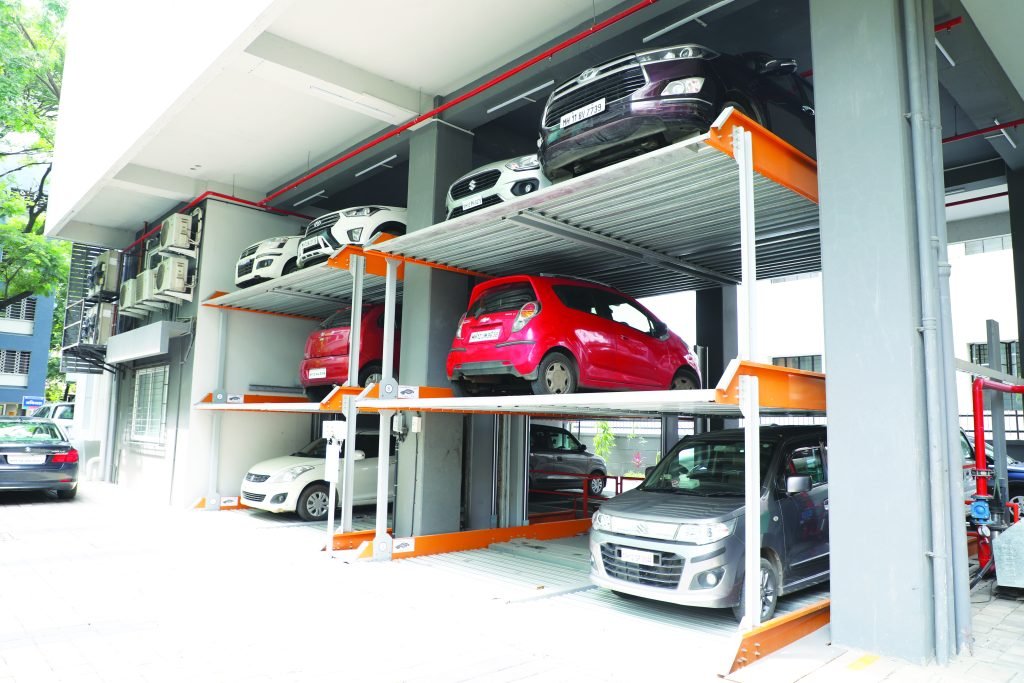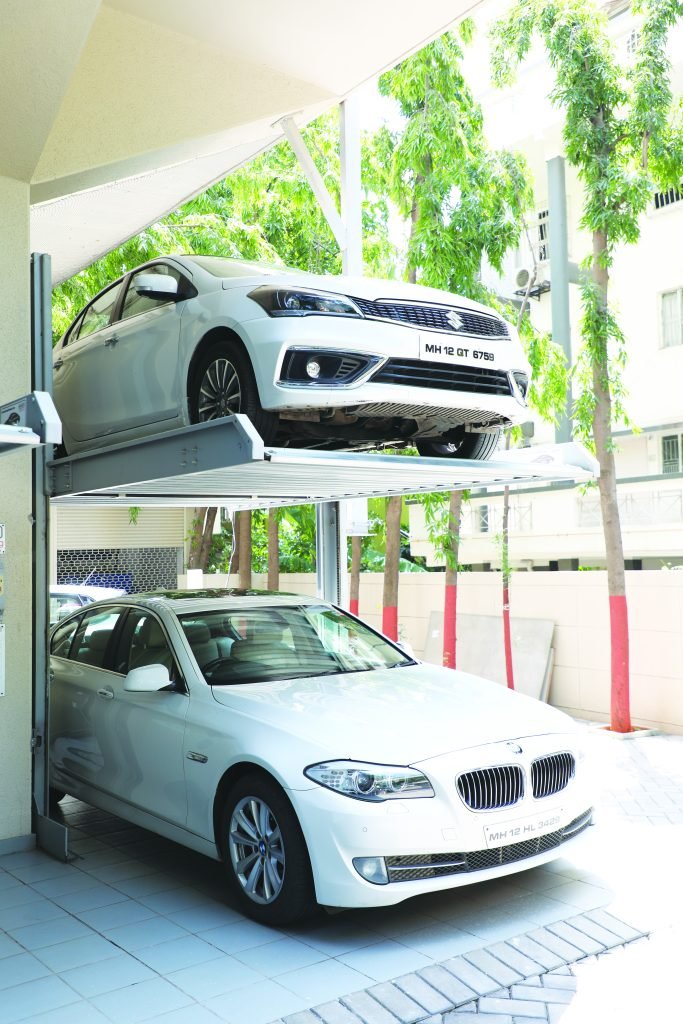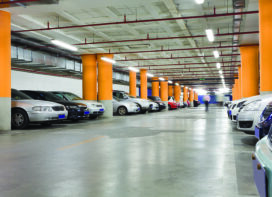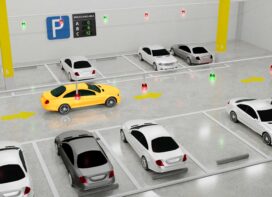Aditya Bhave, Director, Klaus Multiparking India
The global market for smart-parking systems was valued at USD 4.42 billion in 2020. It is expected to grow at a compounded annual growth rate of 21.5% from 2021 to 2028. This presents unique opportunities for the market in India. Sid Jalan explores this with Aditya Bhave, Director, Klaus Multiparking India.
How does parking fit into mobility as a scheme?
As we can all see, India is urbanising fast and more people are moving into cities every day, with the city infrastructure being utilised for this increasing population density. That’s why we have facilities like metros and public transport to ensure that there is still space, otherwise vehicles would have taken over the roads. That is essentially the intention of multilevel parking where we are helping decongest the cities, making the roads for driving vehicles and not parking them. The future of mobility forces us to employ multilevel parking where we can stack cars on top of each other to save space.
Another point to note about car parking systems is that our vehicles are parked for almost 90% of the time. The remainder is spent driving around, which includes time spent searching for a parking spot. We typically spend about 5 to 10 minutes driving around, trying to find a parking spot in major metros. But,if you have a designated spot in a multilevel car parking system, you can directly drive to the spot and park your car. You save time, you save fuel, you reduce emissions, and all of this adds to the efficiency of the broader car parking system. Even from a safety standpoint, car parking systems are more secure against theft, as opposed to parking on the streets.
 Parking aggregators are coming up with reservation of spots. Many municipalities are also creating their own such systems. How will you integrate into this?
Parking aggregators are coming up with reservation of spots. Many municipalities are also creating their own such systems. How will you integrate into this?
Our systems are essentially controlled by PLCs which are logic controllers, so whatever data we have on our parking systems can be relayed to any other aggregator apps. If there is a vacant spot in our parking system, we can inform these aggregator apps regarding the availability. Later on, the ticketing system and the billing system can also be integrated.
At the moment we are not doing this. Our current parking systems mainly go into commercial and residential spaces, which have designated spots. If it’s installed in a residential space, typically you have a family that has two cars and a designated car parking system for them. So, we don’t need to integrate with a third party system as yet, but the facility is available to do this in the future.
Multilevel parking is really interesting; If you take the footprint of one car and go up vertically, you can fit up to 20 cars. This saves the developers a lot of space that they can use for amenities, gyms, swimming pools and other recreational activities, which would have otherwise been used for car parking.
 What are the challenges you see for the parking systems?
What are the challenges you see for the parking systems?
One thing we need to address as a collective is that there are a lot of risks when you deliver these kinds of systems, as it is installed in commercial and residential complexes. There is definitely some amount of risk for the end users who are operating the systems. We would like there to be some form of regulation in the car parking system industry, just like there is in the elevator industry. Even escalators and other mechanical device industries have the same. We feel that once these systems become regulated, things will become much safer for the end user. This will help not just us, but the whole industry.
There should be safety regulations, technical regulations, and maybe third-party audits of the system to ensure proper functioning and that they’re up to a certain quality standard. If the systems do not meet safe design standards or proper quality checks during manufacturing and installation, then the end user may face the risk of these machines. This is detrimental to the entire parking system industry, just as we’re taking off.
Even though we’ve been in India for the last 20 years, this technology is still in the nascent stages. There is adoption of car parking systems, but it can definitely increase. So hopefully with the smart city program, the government incentivises more people to use this technology. But typically, our end customers are developers. So we will have to see how it fits into the whole smart city program.
What are you doing for Electric Vehicle (EV) charging infrastructure?
We have thousands of spaces of mechanized parking installed all across the country and we have the facility to upgrade our parking systems, so you can opt in for an EV charging point in your existing car parking system as well. It’s quite straightforward as you park your vehicle in the parking space and all you need to do is plug into the attached charging point. You can leave for your work and your vehicle will be charged by the time you come back.
We offer stack parking, semi-autonomous parking, and fully automated parking structures. We will provide a charging point for all of these systems, including your individual pallets. Once plugged in to your charging point, the metering and the electrical infrastructure of the building is also managed. You can keep a track of your electricity consumption for EV charging. This includes two-wheelers as well because once we cover four-wheeler EV charging, the two-wheeler is automatically covered. It has the same application of technology.
 How has the pandemic affected your plans?
How has the pandemic affected your plans?
During the pandemic, we did notice that initially a lot of people were working from home and were buying bigger spaces for that. But at the end of the day, buying your own personal vehicle is still a very emotional decision that every family makes. And then once you have your first vehicle, you want to buy your second vehicle or you want to buy a bigger vehicle. Every family would like to have its own vehicle and that’s why parking restrictions are a part of the housing society or the commercial complex. That is where we fit in.
But even then, as we see the pandemic getting under control, many major companies are already recalling their employees back to the office. Even large IT companies who had their employees working from home, are all coming back to commercial spaces. We see that the trend of work-from-home is reversing already. This implies that parking systems will still be of need after the pandemic.
There are even some systems that we’ve put in place for touchless management, like RFID tags so that you don’t have to touch the panels. You just point the RFID tags and the system will operate. Or you can also have a remote-control operation. These are some of the new features that we have added during the pandemic that customers can take advantage of.
Are you bringing any new technology to the market?
We were one of the earliest entrants to the mechanized parking industry and have invested in developing a state-of-the-art manufacturing facility in Shirwal near Pune. In terms of manufacturing itself we have a complete in-house process with robotic welding, laser cutting, CNC bending and powder coating. Due to having most facilities in-house, we are able to maintain product quality and reduce the overall lead time from months to weeks.
In addition, EV charging is one of the latest technologies that we are bringing to the market, which we believe is really going to take off in India. We’re already seeing a lot of interest in EV four-wheelers and EV two-wheelers, which will employ our systems. And in Mumbai, a city with the highest congestion and density, we have implemented unique systems that are fully automated. You just need to leave your vehicle within the system, walk out, and the system will take care of your vehicle without need for any manual operation.
 TrafficInfraTech Magazine Linking People Places & Progress
TrafficInfraTech Magazine Linking People Places & Progress



